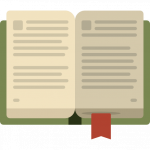Attending Schools
Public School Program
Principles of Learning
The Public School Program in Nova Scotia is based on principles of learning that teachers and administrators should use as the basis of experiences they plan for their students. These principles are:
- Learning is a process of actively building knowledge.
- Students build knowledge and make it meaningful in terms of their past knowledge and experience.
- Learning is increased when it takes place in a social and collaborative environment.
- Students need to continue to look at learning as an integrated whole.
- Learners must see themselves as capable and successful.
- Learners have different ways of knowing and representing knowledge.
- Reflection is an important part of learning.
The Learning Outcomes Framework
The learning outcomes framework is made up of a number of curriculum outcomes statements describing what knowledge, skills and attitudes students are expected to show as a result of their cumulative learning experiences in the primary-graduation path. General curriculum outcomes statements describe what student are expected to know, be able to do and value when finishing a curriculum area. Key-stage curriculum outcomes statements describe what students are expected to know and be able to do by the end of grades 3, 6, 9 and 12 as a result of their cumulative learning experiences in a curriculum area. Specific curriculum outcomes statements describe what students are expected to know and be able to do at the end of a particular grade level or end of a course.
Programming for Students with Special Needs
The definition of Special Needs is any of various challenges such as a physical, emotional, behavioral or learning disability or impairment that causes an individual to require additional or specialized services or accommodation such as in education.
Teaching strategies, materials and resources are adapted to meet the diverse needs and the differing rates and styles of learning of all students from elementary through senior high school. Adaptations may be made in one or more of these areas:
- organizational
- environmental
- instructional
- motivational
- assessment
- resources to help access and extend the curriculum
These adaptations are specified under the Special Education Policy. (Download a copy) (Read More 1)
Individual Program Plans (IPP)
Even with adaptations, a few students will struggle to reach provincial learning outcomes. In that case, the student\'s planning team works together to develop an individual program plan. An IPP changes the intended outcomes and/or adds new outcomes for the student. Download a copy of Creating an Individual Program Plan (IPP). (Read More 2)
French First Language Programs
The Acadian and French Services Branch is responsible for the French first language programs. These programs are designed to meet the needs of students who have the right to be schooled in their mother tongue. View here to see the French version of Public School Programs. (Read More 3)
French Second Language Programs
The Public School Branch is responsible for the French second language programs. The goal is develop the student\'s ability to effectively communicate in French. Nova Scotia offers four French second language programs:
- Core French (grades 4-12)
- Integrated French (grades 4-12)
- Early French Immersion (Primary to 12)
- Late French Immersion (Grades 7-12)
Elementary Years: Grades Primary - 6
Elementary schools must include for all children in each year\'s program language arts, mathematics, visual arts, health, physical education, music, science and social studies. In Acadian and Francophone schools, English must be offered at grade 3. In core schools, French (Mi\'kmaw or Gaelic) must be offered at grade 4. Regional Centres may request approval to offer immersion and integrated French programs in the second official language of the students after consulting with EECD.
Visit here to see the learning outcomes from primary to 3. (Read More 4)
Visit here to see learning outcomes from 4-6. (Read More 5)
Junior High/Middle Years: Grades 7-9
For grades 7, 8 and 9 the following courses are compulsory:
- French (or Mi\'kmaw or Gaelic)
- Healthy Living
- Language Arts
- Mathematics
- Physical Education
- Science
- Social Studies
In additional students will take one of these electives at each grade level:
- Band Instruments
- Explore Music
- Family Studies
- Technology Education
- Visual Arts
Exploratory options may be provided to extend the curriculum and provide rich opportunities for young adolescences.
Visit here to download the learning outcomes from 7-9. (Read More 6)
Senior High Years: Grade 10-12
At this level schools should offer to all students, patterns of courses appropriate to their individual needs. Counselling and teaching staff should help each student select courses that meet the entry requirements of the post-secondary education or employment choice of the student. Courses at grade 10 are designed to provide students with access to a strong foundation of common educational experiences. To prepare students for a range of post-secondary destinations, grade 11 and grade 12 programs include course offerings that are increasingly specialized.
Visit here to download the Public School Program to see the high school credit courses. (Read More 7)
Visit here to download the learning outcomes from 10-12. (Read More 8)
Credits for Graduation Diploma
A credit is awarded to a student when an approved course has been successfully completed; a minimum of 110 hours of scheduled time. Students can earn half credits; minimum of 55 hours. The minimum number of credits required for graduation is 18, although schools are encouraged to develop schedules that allow students to complete 20, 21 or even up to 24 credits. There are four different types of credit: Academic, Advanced, Graduation and Open
Visit here for a summary on credits for a graduation diploma 2017-2018. (Read More 9)

